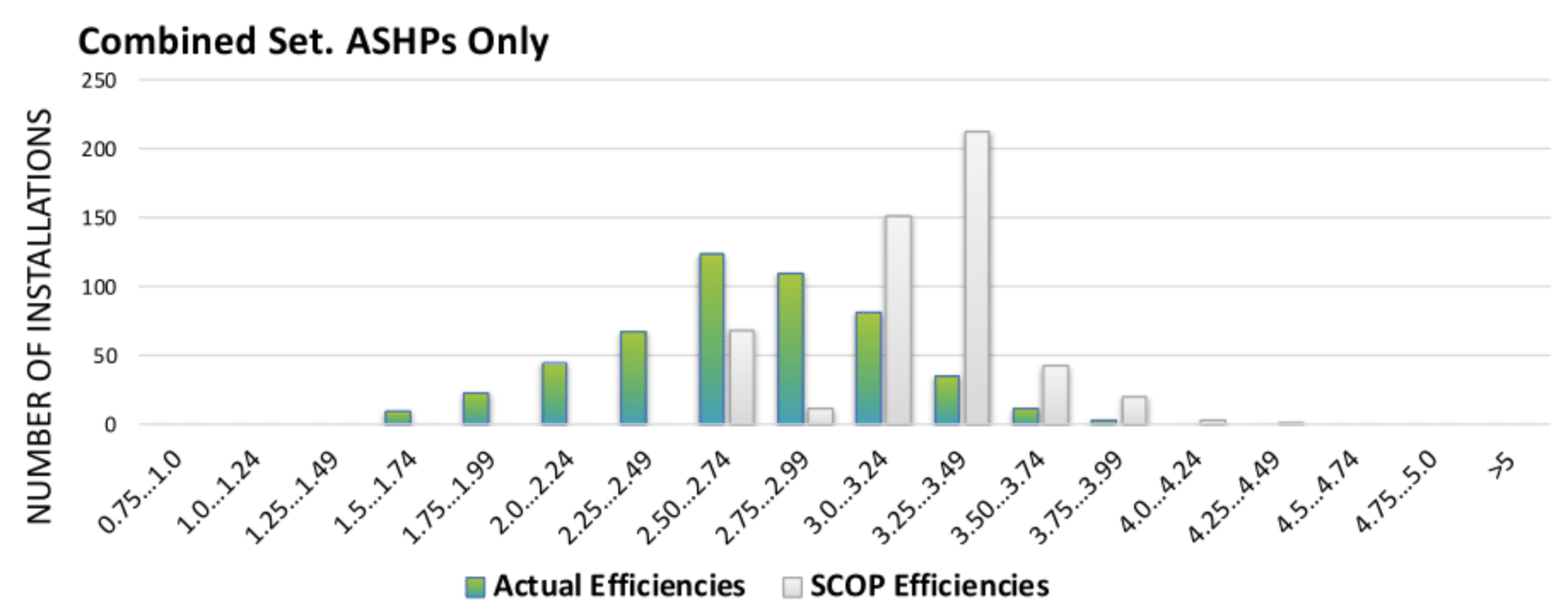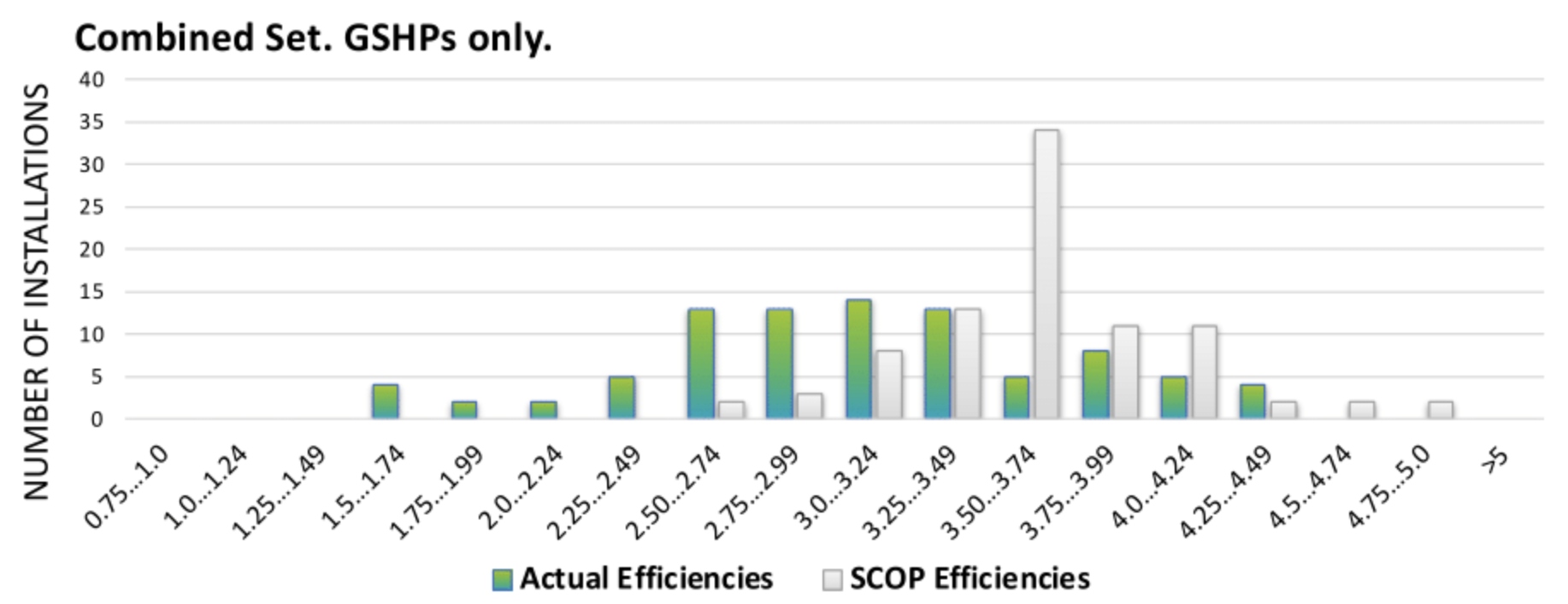Heat Pump Performance – The Ofgem Data Project
We’re launching a series of briefing papers on microgeneration and performance issues with an introduction to a major research project we started in 2019 and finished last year.
Based on data provided by Ofgem, the research provides a unique window on heat pump performance and, crucially, measured heat pump performance compared to industry-provided performance forecasts. The full research paper is available here. We’ll follow up on this summary briefing with more detail, new visualisations and comment on recent developments.
Briefing: In-Situ Heat Pump Performance 1
Background, methods & headline results - February 2022
Introduction: The Ofgem Dataset
There is widespread confusion about heat pump performance and the metrics used to assess and compare heat pump units and their in-situ efficiency (see Efficiency Metrics below). The performance infor-
mation consumers are given is based on factory assessments, which do not take account of all efficiency losses once installed. In-situ efficiencies can fall significantly short of the performance predicted by the factory tests.
rb&m partners have worked on these issues for several years and argued for more objective, evidence-based information on forecast performance. As part of this work, we obtained a large dataset from Ofgem containing monitored data for more than 2,000 UK installations and used that data to calculate their actual in-situ performance. The installations were subject to compulsory metering for Renewable Heat Incentive (RHI) payments. Critically, the dataset also contains the installer efficiency predictions: the formal performance estimate given to consumers and Ofgem. The analysis therefore provides a unique insight into installer estimates versus calculated actual efficiencies. rb&m is engaged with a range of key stakeholders to devise better ways to provide consumers with objective information about potential performance. The study text is available from rb&m:
https://r-b-m.com/wp-content/uploads/2022/03/Performance-Data-Research-Summary-rbm-.pdf
ASHP Performance. Sample: 510 installs
The average installer forecast was 3.25 and the average calculated SPF was 2.71. 15 (3%) had SPFs above 3.5 and 124 (24%) had SPFs above 3.0. 145 (28%) had SPFs below 2.5 and 33 of were below 2.0.
GSHP Performance. Sample: 88 installs
The average installer forecast was 3.65 and the average calculated SPF was 3.07. 22 (25%) had SPFs above 3.5, 26 (29%) had SPFs below 2.75 and 13 (15%) had SPFs below 2.5.
rb&m's performance research
rb&m's research method is explained in our study text (link to summary above). That report includes commentary on efficiency boundaries. Only the most recent installations were included in the analysis, and only those where at least one year of contiguous clean data was available.
rb&m is committed to objective research focused on performance outcomes and the provision of reliable consumer infor-mation. rb&m partners sit on five Microgeneration Certification Scheme (MCS) Technical Working Groups including Heat Pumps.
Subsequent Briefings will cover the research results in more detail with a focus on the most recent installations and the gap between installer forecasts and calculated performance.
Future briefings will also cover our research on wind, solar and biomass microgeneration. For more information about our technical research contact Colin Meek: colin@r-b-m.com
Follow us on LinkedIn: www.linkedin.com/company/r-b-m
Efficiency Metrics
Heat pump Coefficient of Performance (CoP) denotes the efficiency at a specific point in time.
For example, a CoP value of 3 means that 1 kWh of electricity is used to generate 3kWh of heat.
The Seasonal Coefficient of Performance (SCOP) is a product efficiency metric using a limited system boundary. It is combined with climate data to estimate energy output.
The Seasonal Performance Factor (SPF) is the measured annual efficiency of a heat pump in a specific location. The SPF usually refers to how the system actually performs.



